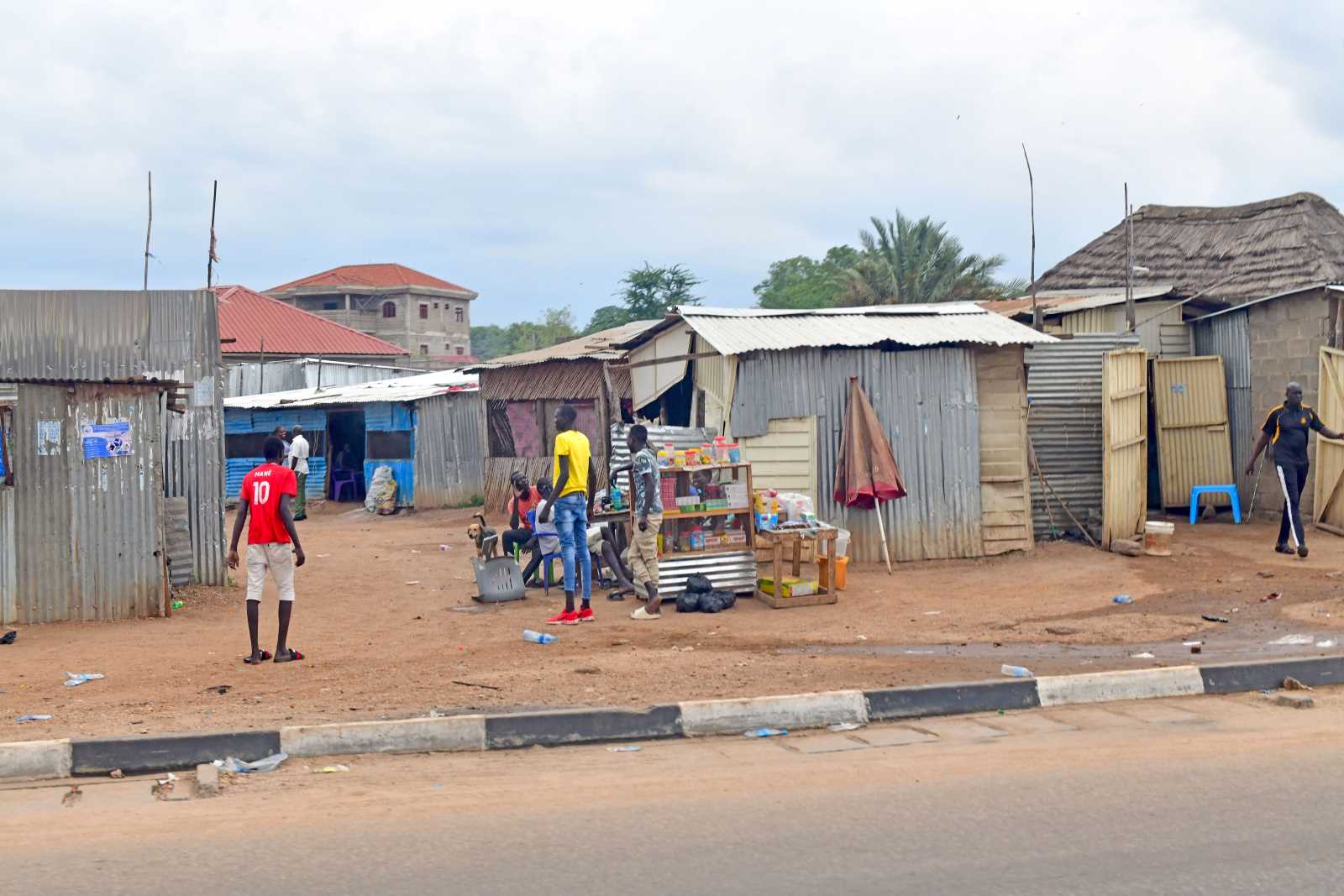OECD
The myth of western aid
[ By Kishore Mahbubani ]
It should be stressed upfront that there have been some beneficial effects of Western aid. Considering the huge sums involved, even if only a trickle did good, the results would still be significant. Hence, the West can legitimately point to a university in Lahore (LUMS), a bridge in Bhutan, a road in Laos or Colombo Plan Scholars in Singapore. But these are the exceptions. The vast majority of Western aid is as good as wasted.
Or perhaps, wasted is not the correct word. It has been used – but it has been used to help the donor countries, not the poor developing countries. My rough guess is that out of every $ 10 of Western aid that is allegedly spent in the Third World, $ 8 returns to the donor country in the form of administration expenses, consultancy fees and contracts for donor country corporations. In short, there is very little actual transfer of aid to the developing countries.
Sunset OECD
The Organisation of Economic Cooperation and Development (OECD) was set up in 1961 to assist countries in economic development and sustainable economic growth. By any objective standards, the OECD has failed in its mission. Still, the West continues to spend € 342.9 million a year maintaining an expensive secretariat in Paris, which produces excellent research papers but achieves little in delivering results on its core mission. More critically, the OECD happily provides estimates of the total amount of Official Development Assistance (ODA) provided by the West. Recent estimates show that the OECD members gave approximately
$ 104.4 billion to the developing world.
However, what is missing from this massive OECD estimate is how much of it actually reaches the developing countries and how much of it is effectively recycled back into the donor countries. The OECD has more than enough bureaucratic and academic resources to carry out such an audit. But it would not even dream of doing so for it will be killed by its own Western paymasters for attempting such an audit. Nor will anyone in the West have the courage to state another obvious truth: after having failed in its core mission, the OECD has clearly become a “sunset” organisation. Its disappearance will have no impact on the developing world.
There are many other distortions in the provision of Western aid; indeed too many to be documented in a brief article like this. A few deserve mention:
- Western aid does not go to the poorest or neediest countries. It goes to those countries which support the foreign-policy agendas of the donor countries. Take American aid, for example. OECD estimates show that on a per capita basis, American aid is the lowest among the OECD countries. But even the relatively little amount that America gives goes only to select countries, like Israel or Egypt even though Israel is a developed country. In recent years, Israel has received between $ 2.5 to 3 billion annually in US aid (Sharp, 2007) – and that is more than what all of sub-Saharan Africa gets.
- Western countries do not hesitate to pull the plug if any recipient country fails to support their foreign policy agenda. Many African countries signed on to the International Criminal Court (ICC) statute because Africa clearly needed the ICC process. But when some African countries took a principled stand and refused to sign the side agreement to exempt American nationals from ICC prosecution, America threatened to cut off, and in some cases actually withheld, foreign aid. Altruism never featured in these deliberations.
- Much of the aid given could be nullified by other hugely damaging actions of the donor countries. Take the case of the EU. In 2003, Johan Norberg wrote: “According to the United Nations Conference on Trade and Development, EU protectionism deprives developing countries of nearly $ 700 billion in export income a year. That’s almost 14 times more than poor countries receive in foreign aid”. 14 times! Much will have to be done to correct that distortion.
- In 1969, the OECD countries pledged to raise ODA to 0.7 % of their gross national incomes (GNI). Yet very few OECD members have honoured this pledge. In 2006, the actual ODA flows amounted to 0.31 % of member countries’ GNI (OECD, 2007). The difference between 0.31 % and 0.7 % amounted to approximately $ 134.7 billion. Even if only 20 % of this would have actually reached the developing countries, this amounted to a real loss of $ 26.9 billion. Compare theses figures with the total GNI of Least Developed Countries, which, according to UN statistics, was approximately $ 148 billion in 2006. Does anyone really expect the people in the developing world to be impressed by the West’s repeated pledge that the 0.7 % threshold will finally be met in 2015?
- Even aid channelled through multilateral organisations is not immune from these distortions. The donor countries are often able to control the agenda of the multilateral aid organisations and also ensure that the budgets of these organisations are used in favour of their countries. When Australia “donates” scholarships through the Asian Development Bank (ADB) most of them have to be used in Australian universities or on services provided by Australian academics. Undoubtedly, some good comes from these scholarships. But if someone from Papua New Guinea could find a degree or more relevant course in another developing country institution, the scholarship cannot be used.
Donor sensitivities
The multilateral aid organisations also know that they pay a price if they ignore the wishes of the donor countries. The Scandinavian countries enjoy the reputation of being most generous in the provision of aid (in 2006, three out of four Scandinavian countries met the pledge of giving ODA up to 0.7 % of GNI). But they too are not immune from applying pressures.
In 1999, then UN Secretary-General Kofi Annan decided to choose the new Administrator of UNDP on merit and not select the candidates traditionally imposed on the UN by the EU. The EU had nominated Poul Nielsen, the Danish Development Minister at the time. On the basis of merit, Kofi Annan chose Mark Malloch Brown, a British national, instead. The Danish government retaliated by slashing Danish aid to UNDP by 23 %. No one knows how many poor Africans or Asians suffered because Danish national pride had been wounded.
The real tragedy of this whole story is that the West could have actually accomplished its ostensibly altruistic goals in the developing world if it focused its efforts on helping the recipient countries, instead of ensuring that most of the ODA was used to secure their own interests. And it could have accomplished this with a fraction of the money that has been ostensibly transferred to the Third World.
This is what the real story of the Asian economic miracle is all about. The Asian countries that have succeeded are those who took charge of their development agenda and used the ODA given to them to develop the capabilities that they really needed, not those that the donor countries were pushing on them. The biggest success story for UNDP is probably Singapore. Two UNDP consultants, in particular who were sent to Singapore, made a huge difference: They were Albert Winsemius, a Dutch national, and I.F. Tang, a Chinese national. They developed good relationships with the architect of Singapore’s economic miracle, Dr. Goh Keng Swee. They worked together as a team and Singapore took off.
Depressing realities
Contrast the Singapore experience with two real-life stories of how aid was distorted. In 1973/74, I served as the Charge d’Affaires of the Singapore Embassy in Phnom Penh, a war-torn capital, which was being shelled everyday by the Khmer Rouge. I was 25 years old then. I met another 25-year-old female diplomat from the American Embassy. The Lon Nol regime then in power was being kept afloat by American aid. Each day, this young American diplomat would call on the Cambodian Minister of Economic Affairs and instruct him on what measures to implement.
She was a good person and well intentioned. But she, not the minister, was running the Cambodian economy. It is no wonder that the Lon Nol regime collapsed. No foreign aid succeeds if there is no sense of ownership of the development process by the recipient country. While OECD rhetoric has become aware of this fact for some time, it is doubtful, to say the least, that Western donors really accept the principle of national ownership.
There is another similar horror story, a story which is worse in some ways because it was carried out not by the “hegemonic” American power but by a respected multilateral institution, the International Monetary Fund (IMF). Joseph Stiglitz (2002) recounts this story well, it concerns Ethiopia, one of the poorest countries in the world.
Ethiopia’s leaders tried to take charge of their own development agenda, and yet, received no support from the IMF in doing so. In 1997, the lending programme to Ethiopia was suspended ostensibly on the grounds that the Fund was concerned about the country’s budgetary position. Ethiopia was pressured to limit expenditure on development to only money from tax revenues, instead of relying on international assistance, which was deemed less stable. Actual statistics showed the IMF assumption to be untrue. When Ethiopia repaid an American bank loan early using its reserves so as to be free from the high interest rates, the country faced strong objections from the IMF and the United States, despite the sound economic move, as prior approval had not been obtained from the IMF. It is evident that neither the sovereignty of the country nor its right to formulate its own development strategy was respected in both cases.
I end this article with these stories to illustrate how sadly distorted the Western aid project has become. The real tragedy is that given the overwhelming amount of goodwill among Western populations towards the poor developing countries, so much could have been done with the money approved by Western taxpayers for the aid budgets. Unknown to these Western populations, very little of the money reached the Third World or was actually used to help the poor developing countries. The Western populations deserve to be told what really happened to their money. The time to tell the truth has come.









